5 Ultracontemporary Artists Redefining the Korean Art Landscape
The dynamic South Korean art scene is quickly becoming one of the most prominent globally, blending rich traditions with cutting-edge innovation. And...
Carlotta Mazzoli 13 January 2025
Delaine Le Bas is a British performance artist of Romani descent, who takes her challenging works out across the globe. She is passionate about her art and the rights of GRT communities (Gypsy, Roma, Traveller). Romani Embassy is one of her most famous works.
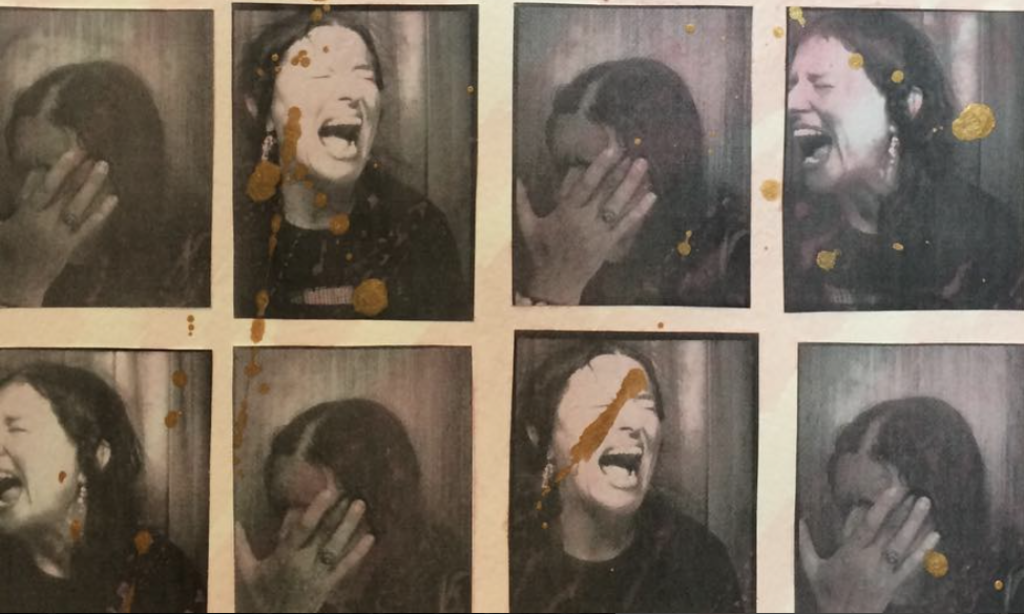
Delaine Le Bas, Medea, 2019. Artist’s website.
The only one of five siblings to finish school, Delaine Le Bas was bullied and excluded by children as well as teachers. Sadly, this is a very common experience for Romani kids. She went on to study fashion and textiles at Central Saint Martins at the University of the Arts London, where she met her husband, the artist Damian Le Bas of Irish Traveller descent, who passed away in 2017. The couple often worked together. Delaine Le Bas has also created performance text works with her son, the writer Damian James Le Bas.
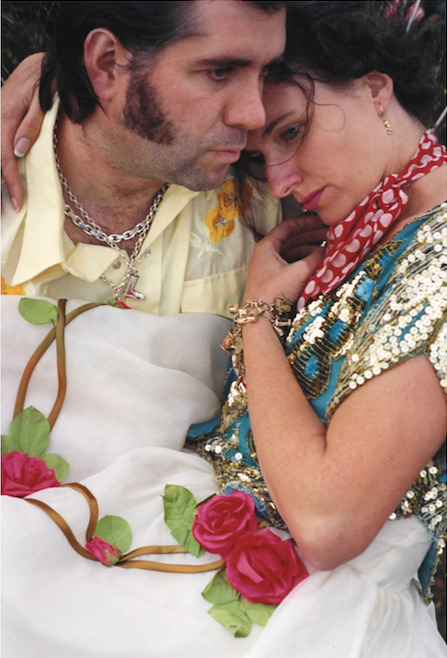
Portrait of Damian and Delaine Le Bas, What We Wore project, 1999. Project’s website.
Delaine Le Bas creates installations and performances which combine different media, including textiles, embroidery, sound, photography, and film. She regularly uses her body as part of a larger, complex discussion around Romani femininity and stereotypes. She explores personal and political boundaries, and what it means to always be the outsider.
Most Roma art is held in storage, gathering dust in basements of museums… Most artists are either ignored altogether or, as Gypsies, we’re visible only in a highly negative way.
The Guardian, 8 June 2017.
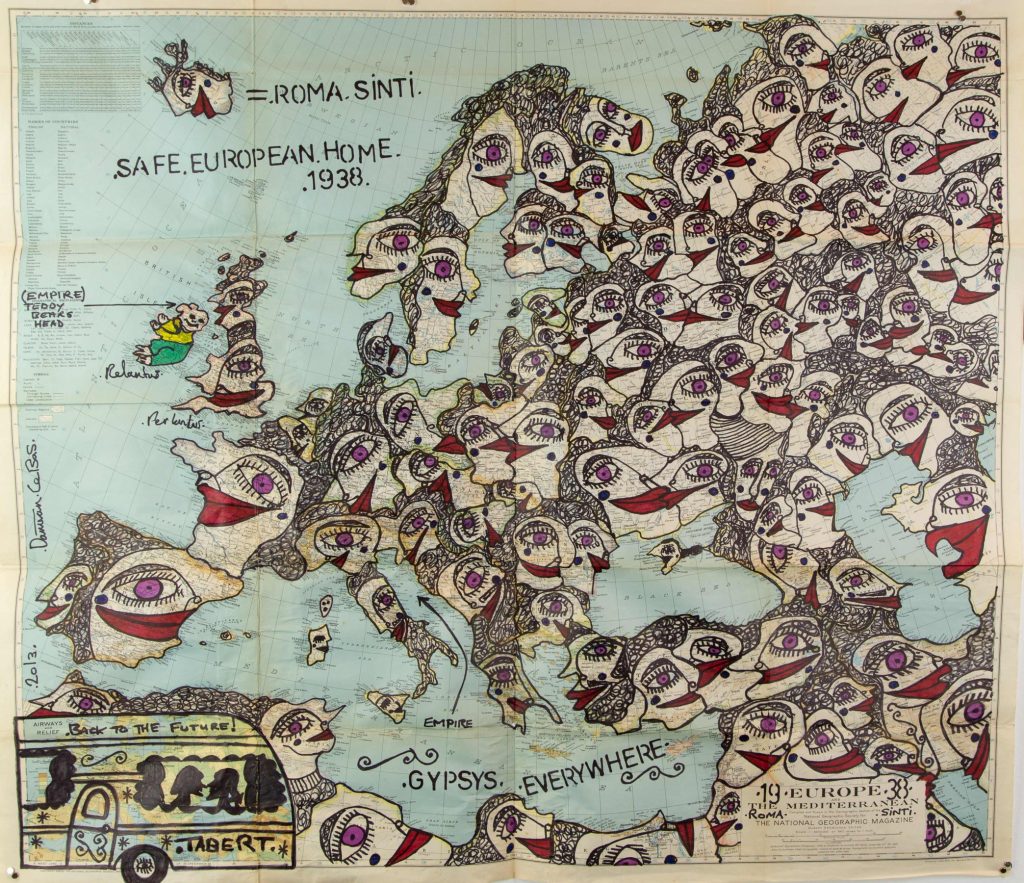
Damian Le Bas, Back To The Future: Safe Home, 2013, Kai Dikhas Institute, Berlin, Germany.
She was one of 16 artists who were part of Paradise Lost, at the very first Romani Pavilion at the Venice Biennale in 2007. She also played a vital role in the establishment of ERIAC, the European Roma Institute for Arts and Culture. In the publicity for the First Roma Pavilion, Delaine Le Bas talked about how her life, her work, and her choice of materials were intertwined.
As a Romani, my viewpoint has always been that of the outsider and this position of the ‘other’ is reflected in the materials and messages within my work. We live in a culture of mixed values and garbled messages. My works are crafted from the disregarded and disparate objects of the car boot sale and the charity shop.
First Roma Pavilion, Venice Biennale, 2017, publicity materials.
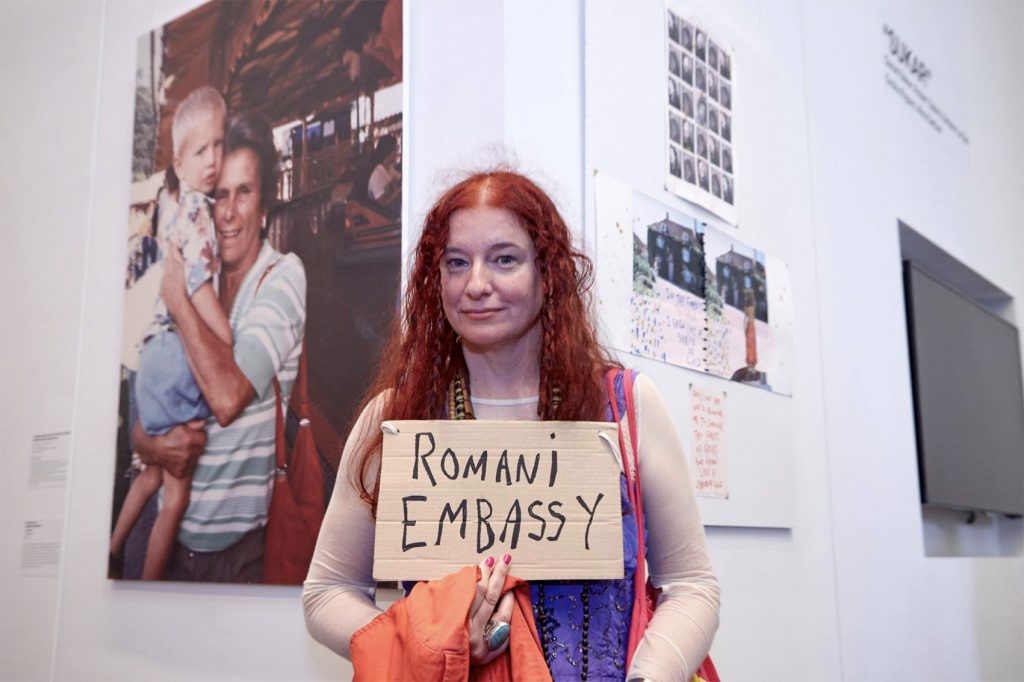
Romani Embassy, 2019. Artist’s website.
Romani Embassy is an ongoing installation and performance. Begun in 2015, it continues to this very day. It is an embodiment of the issues facing the global Roma community. GRT people do not have a shared homeland or a nation-state. There is no national embassy to represent them in times of trouble.
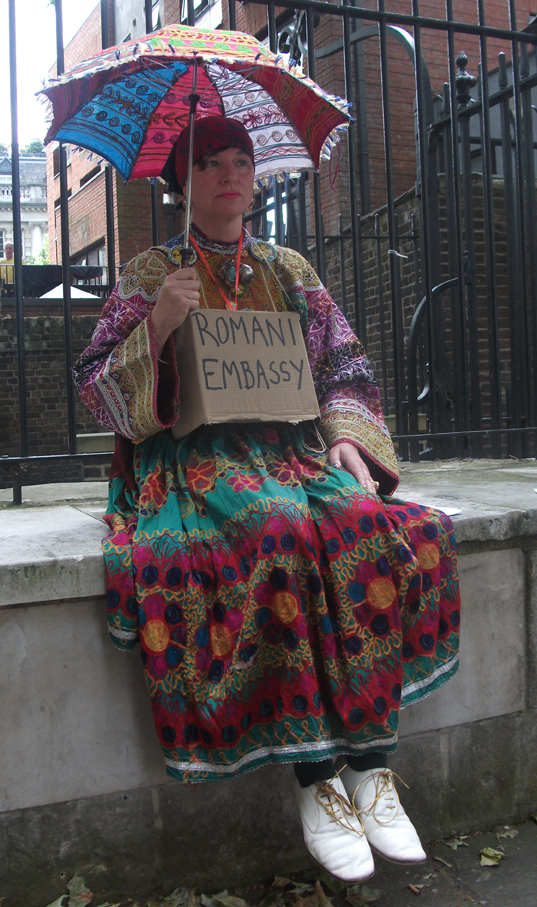
Delaine Le Bas, Romani Embassy, 2015, London, UK. Artist’s website.
The Indigenous Rights movement in Australia is the inspiration for the work. In 1972, protestors gathered outside Parliament House in Canberra with a beach umbrella and a hand-painted sign saying Aboriginal Embassy. The question raised is, where is the Embassy for the disenfranchised? Who will help those without a settled homeland or who have been excluded from ancestral homes? Who will offer safe haven to those fleeing persecution from every side?
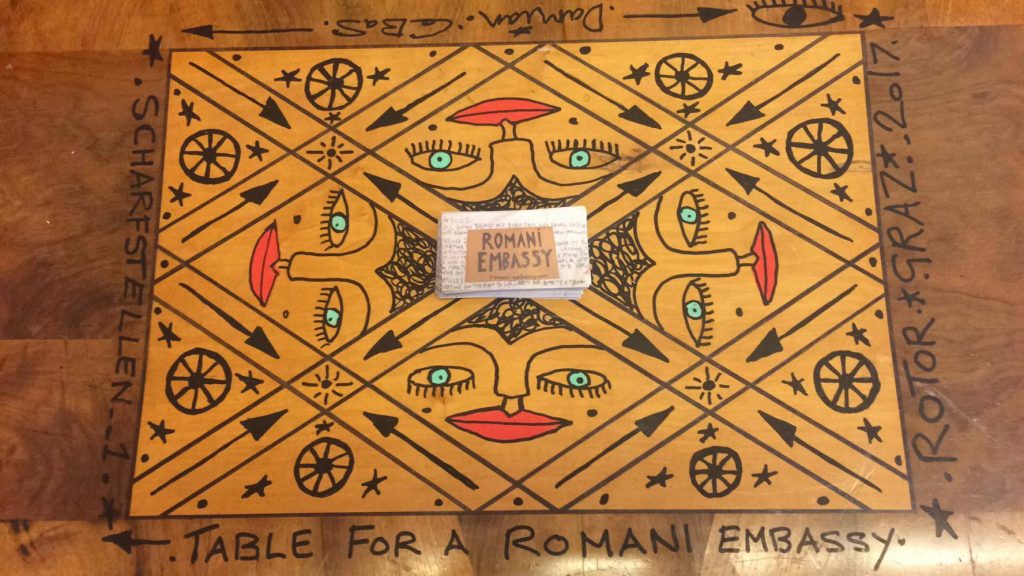
Delaine Le Bas, Table for Romani Embassy, 2019. Artist’s website.
The beauty of this work is that it is a moving, ever-changing piece. It can morph in size and change its appearance. It is both real and virtual. It is both historical and totally up to the minute. At its most basic, it is a cardboard sign on a piece of string, made on the move. But of course, it is so much more than that. It is an act of rebellion and resistance. It challenges the status quo. It is an artwork and it is activism.
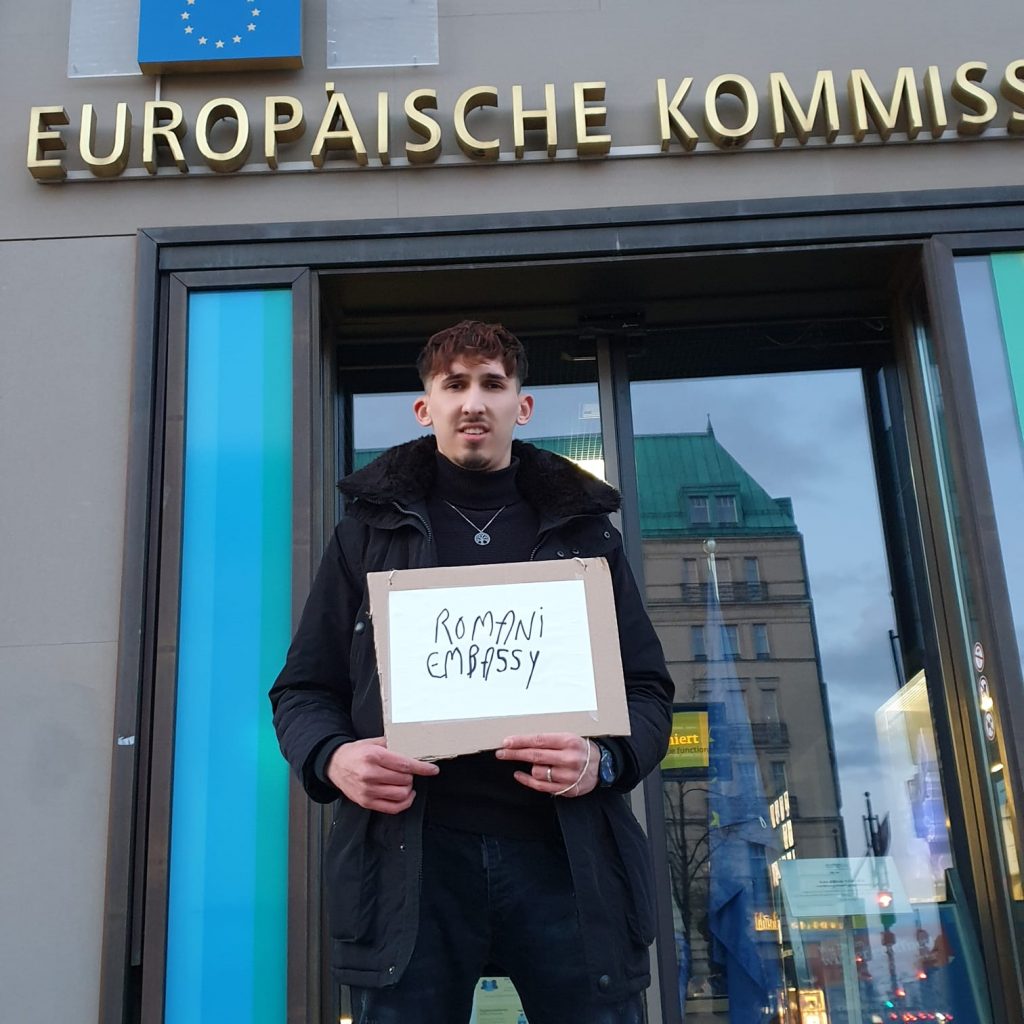
Romani Embassy at the European Commission, 2021.
Romani Embassy is a call for action to try and make a difference for those whose life and culture often involve mobility and alternative life choices. It recognizes families who are forcibly moved or forcibly detained simply for being Roma. People whose plea for understanding and tolerance in the face of exclusion and discrimination is ignored.
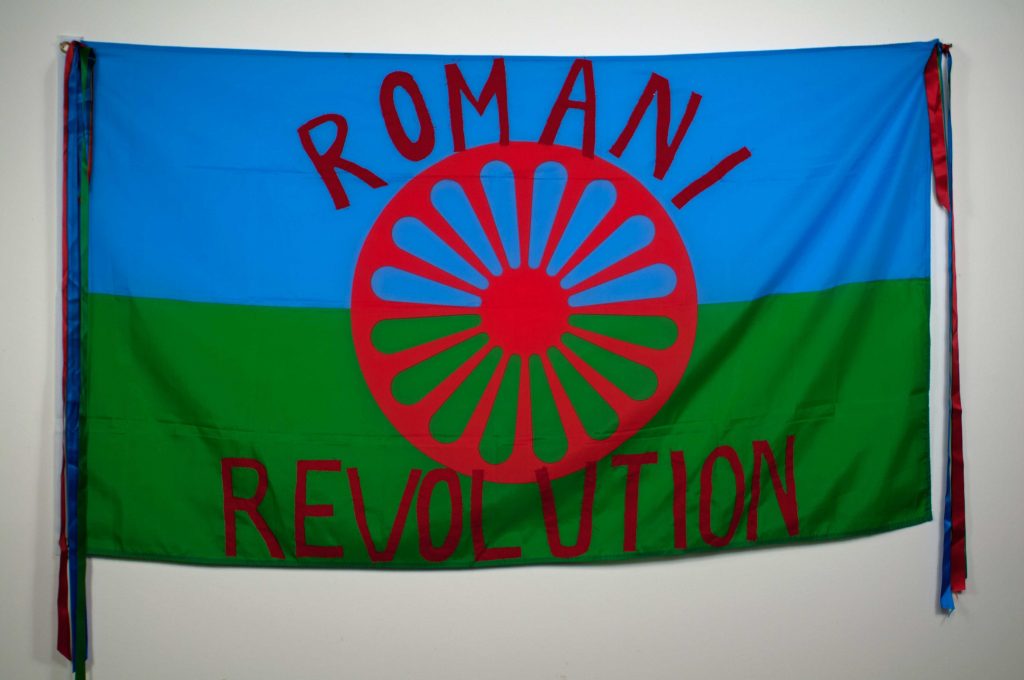
Delaine Le Bas, Romani Revolution, 2012, Kai Dikhas Foundation, Berlin, Germany.
First conceived as an idea at the Helsinki International Artist Programme Residency in Finland in 2012, Romani Embassy grew out of Gypsy Revolution, a joint work by Delaine and Damian Le Bas. Gypsy Revolution questioned the structures which oppress Roma people. The first public performance of Romani Embassy was at When The Fuel Runs Out People Will Need Horses in London in June 2015.
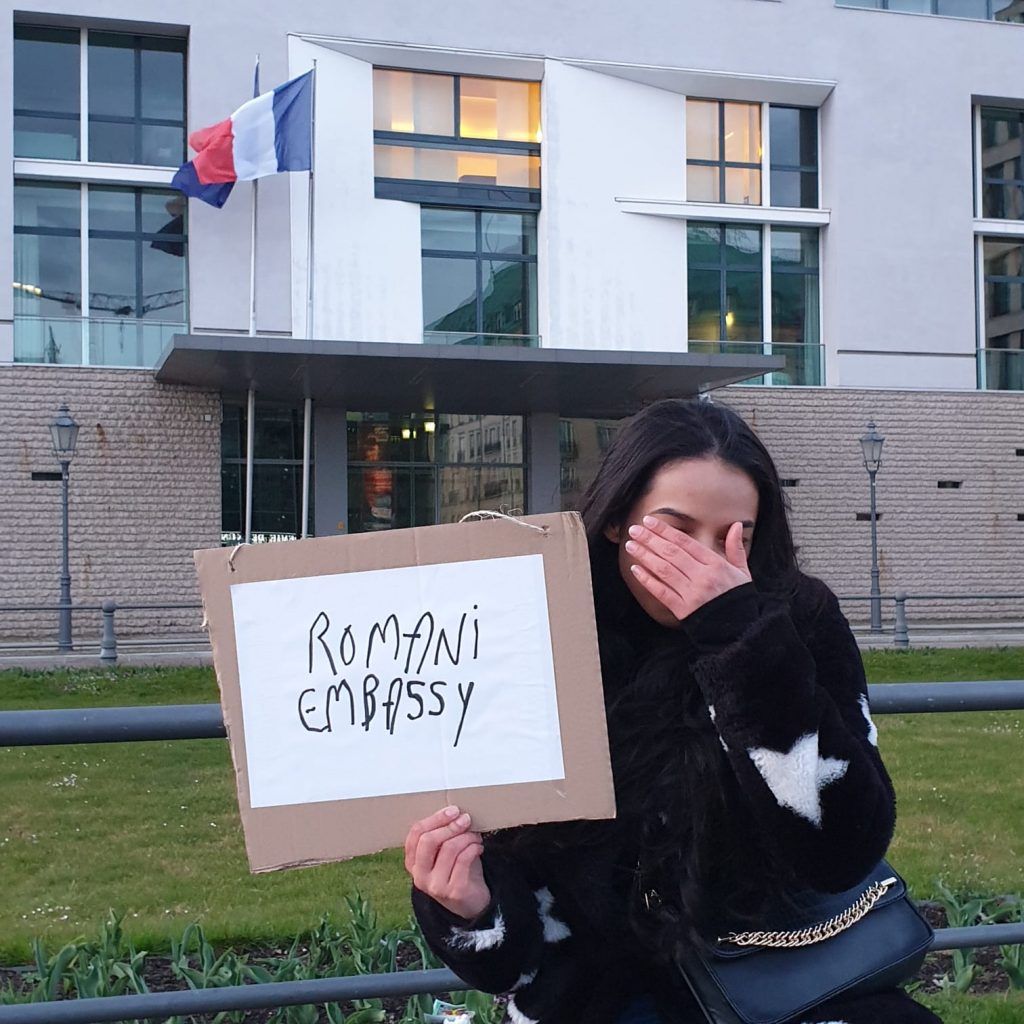
Romani Embassy, 2021, France.
Every viewer is invited to get involved. This is innovative art at its most inclusive. Romani Embassy can morph in size, change its appearance, appear and disappear. It might be one person, it might be a hundred people. It has visited so many countries and locations throughout its life. At every installation, it confronts the lack of will shown across Europe towards Romani communities. It disputes the rhetoric of diversity and inclusion promoted by so many countries whilst Roma people face institutional racism, segregation, and exclusion daily.
As a community, we have no “one homeland”, no one country, no one nation-state as such. We are in many lands but never fully accepted, and at any time, we can be purged from the general population. We are an embodiment of an international population, we have many religions, we speak many languages, and speak many versions of our own language. We have little self-representation politically and no Embassy anywhere to run to in times of trouble.
Artist’s website.
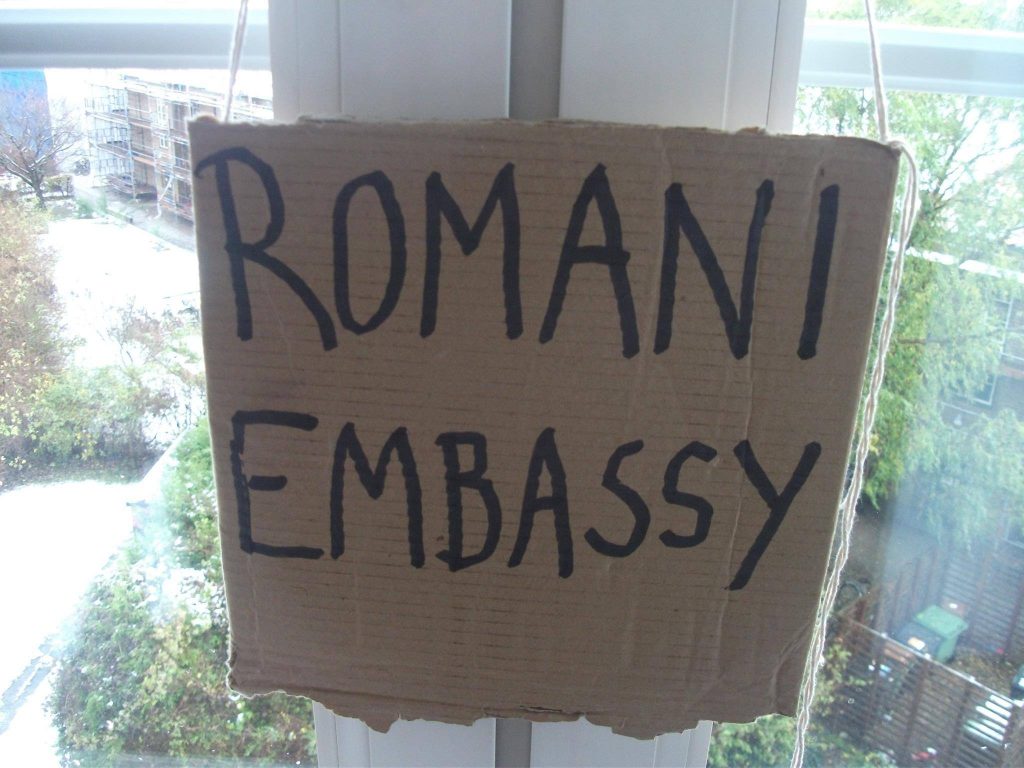
Delaine Le Bas, Romani Embassy, 2015, Malmo, Sweden. Artist’s website.
Would you like to get involved in this amazing art activism? Download the Romani Embassy cardboard here, take a picture with it, or of it in front of embassies, institutions, and state offices. Share it with the hashtag #RomaniEmbassy.
The Romani Embassy has its own website.
For more on the artist, see her website.
ERIAC has a wealth of information on Roma art and activism.
Romani Herstory is a digital library with amazing stories of women Roma artists.
DailyArt Magazine needs your support. Every contribution, however big or small, is very valuable for our future. Thanks to it, we will be able to sustain and grow the Magazine. Thank you for your help!